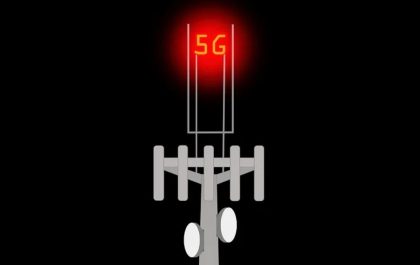Follow-up is art and science at different levels. You have to be adept at understanding your prospects and find original approaches to establish communication with them. An efficient sales follow-up system helps you to develop a lead and convert a dubious prospect into your client.
Still, occasionally you make a mistake when you run a follow-up campaign.
This article will walk over the six most common errors in following up with your prospect. Knowing these errors can allow you to improve the direction of your marketing plan.
Table of Contents
ToggleWhat is Follow-Up?
Following up is the correspondence or actions done following a first interaction; that of a sales call, email, meeting, or event. These steps seek to keep or improve relationships, answer questions, or promote a company product or service. Following up is essential in sales and marketing environments to guarantee leads and make customers feel valued so as to drive them further down the sales funnel.
How Does Follow-Up Proceed?
Follow-up can manifest itself as phone calls, emails, text messages, or even in-person meetings, depending on the medium. It might call for answering a customer’s question, offering more details on a product or service, getting comments, or attempting to close a sale.
A follow-up’s timing is often rather important. For instance, a salesman might send an email immediately following a sales call to recap the discussion and provide additional resources. On the other hand, a follow-up email sent one week following a product delivery can seek reviews and comments.
Why Should We Follow-Up?
Customer service, sales, and marketing actions all depend on follow-ups. Follow-ups ensure that leads and customers feel appreciated instead of neglected, which strengthens customer loyalty and satisfaction. Furthermore, follow-ups might give chances to answer questions or concerns, offer value with relevant material, and support your company’s special selling proposition.
Within sales software and sales automation, follow-ups are absolutely essential for developing leads and guiding them down the sales pipeline. This systematic approach is a cornerstone of developing a modern GTM approach that aligns sales, marketing, and customer success efforts.
The Benefit of Follow-Up
Follow-up benefits your company in numerous different ways.
- It keeps your company front and foremost in the minds of your clients, which increases their likelihood of considering you should they require a good or service you offer.
- It allows you to gather feedback and insights about consumer wants and preferences, which can guide your marketing strategies and business decisions.
- It expands chances for further sales. Following a purchase, for instance, could expose the client to additional goods or services, therefore boosting income.
6 Most Common Mistakes in Sales Follow-Up
Here are six of the most common follow-up mistakes and how to avoid them:
1. Following Up Too Quickly or Too Often
Following up too quickly or too often is one of the worst blunders salesmen make. Staying top-of-mind of your prospects is crucial, but overburdening them with a bunch of follow-up emails could make you seem demanding or desperate. Should a lead experience pressure, they are more likely to reject your offer completely or withdraw.
How to Avoid This Mistake: Before following up once more, give prospects ample time to consider your offer. Space out your follow-up messages to match. Note the degree of involvement of the prospect; if they demonstrate interest, you should follow-up more often. If the prospect has lost interest, spread out your follow-ups to avoid overwhelming them.
2. Not Adding Value to Your Follow-Up
Many salespeople inadvertently follow-up with generic “just checking in” or “wanted to follow-up” messages. These kinds of messages are useless for the prospect and unlikely to get a reply. Prospects are more willing to participate when they think your follow-up provides something practical.
How to Avoid This Mistake: Always offer value in your follow-up communications to help avoid this mistake. Provide fresh ideas, case studies, or solutions fitting for the demands of the possibility. Consider what the prospect might need to know or grasp to move forward, then customize your message.
3. Stopping Too Soon
Many salesmen give up after just one or two tries, as was before indicated. Among the many errors in sales follow-up is this one. A lead may still be interested even if they do not react immediately.
How to Avoid This Mistake: Be patient but relentless. Guide your efforts with the help of the follow-up calendar described below. Don’t let a lack of response during the initial follow-ups discourage you; perseverance is the key to winning most deals.
4. Ignoring Personalization of Your Follow-Ups
If you send the same follow-up template to all leads, you almost certainly risk losing their attention. Prospects will recognize when you are delivering a generic message; it does not make them feel appreciated or comprehensible.
How to Avoid This Mistake: Good follow-up depends on personalizing. Refer to particular information from past talks, highlight the special difficulties of the prospect, and customize your message to fit their situation. Personalizing shows you want them to succeed and have researched their company.
5. Ignoring non-responsive leads
Assuming that a lead who doesn’t reply is no longer interested is a common mistake, as it can lead to the false belief that they have lost interest. Non-responsiveness does not necessarily mean that a lead lacks interest. The prospect might be preoccupied, busy, or waiting for the proper moment to decide.
How to Avoid This Mistake: Don’t ignore non-responsive leads too rapidly. Keep your follow-ups distinct and continue to provide value. Try contacting the lead from several angles (e.g., phone, social media) to re-engage them; use email tracking to check if the lead is opening your messages.
6. Ignoring Request for Comment
Since they don’t want unfavorable remarks or objections, many salespeople are reluctant to seek comments. Still, in the sales process, feedback is quite valuable. It helps you to immediately answer questions or objections and conveys the viewpoint of the prospect.
How to Avoid This Mistake: Encourage prospects to provide comments during follow-up so they might avoid this mistake. Inquire open-endedly, “Is there anything holding you back from moving forward?” Alternatively, you can use “Do you have any concerns I can address?” This demonstrates your concern for their needs and provides you a chance to resolve any conflicts or complaints.
Level Up Your Sales Process With Effective Follow-Ups
Good sales follow-up systems can increase your bottom line and income. It’s about being smart, strategic, and human rather than only about tenacity. Effective follow-ups ultimately convince your prospects that you are a partner in their success rather than merely another salesman.
Remember that every prospect is different. The secret is to customize these methods to meet your style and the requirements of your client. Experiment; record what works; don’t hesitate to be inventive.
Shashi Teja
Related posts
Hot Topics
Walkie-Talkies for Off-Grid Communication: A Must-Have for Your Kit
The silence isn’t peaceful. It’s unnerving. No buzzing notifications. No glowing Wi-Fi icon. Just you, staring at a phone that’s…
How 5G Core Enables Private Networks for Enterprise-Grade Security
5G core is essential for facilitating enterprise-grade security for private networks. Besides security, 5GC provides admins unparalleled control and enhanced…



